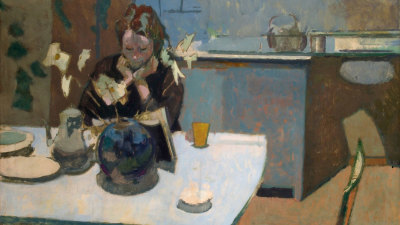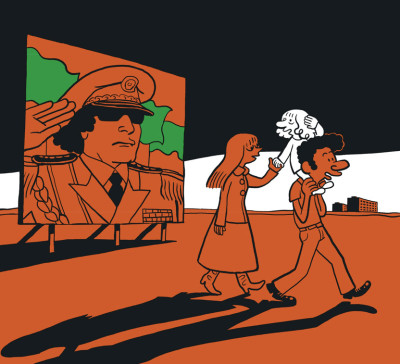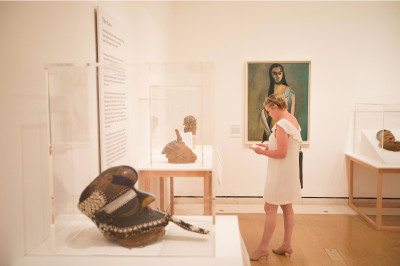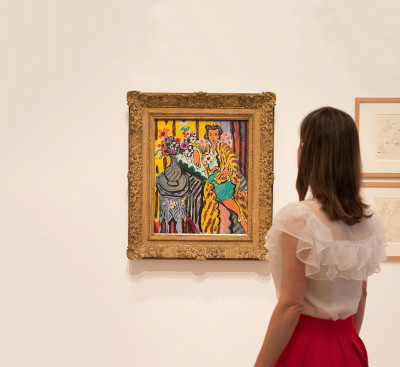An extract from ‘Matisse: The Chapel at Vence’
An extract from ‘Matisse: The Chapel at Vence’
By Marie-Thérèse Pulvenis de Sélignyor
Published 3 March 2014
Read an extract from RA Publications’ new book on the chapel that Henri Matisse considered his greatest work.
-
The artist’s conscience is a pure, faithful mirror in which he must be able to reflect his work every day ... The abiding responsibility of the creator towards himself and towards others is not a hollow concept: by assisting the universe to construct itself the artist maintains his dignity.
Letter from Henri Matisse to André Verdet, 1954
-
Introduction: The Chapel of the Rosary, Vence
Matisse compared the Chapel of the Rosary in Vence to a book whose pages are to be inscribed using brushes and black Indian ink on white ceramic tiles, enhanced by the colour of the stained-glass windows. Beginning in 1932 with an edition of the poems of Mallarmé, Matisse illustrated a number of different books; their pages all share the same characteristic architectural space constructed through the artist’s choice of typography and graphic design – pen and Indian ink, or sepia and cut paper coloured with gouache. As in the chapel, the pages of these books are overlaid with patterns and this serves to accentuate their luminous quality and their presence.
In creating the chapel, Matisse went beyond the specific religious ritual for which it is the framework: he was also motivated by his personal view of the archetypes represented by light and space. The boundless white inside the chapel represented the infinite, as well as man’s spiritual dimension and mystical nature. The chapel is an enclosed space built around the idea of man’s potential salvation; this is symbolised by the disproportionate height and verticality of the chapel’s bell tower, which extends upwards towards the sky, and by the brightness from the sky that enters the chapel through its windows. The building represents an embodied metaphor for our efforts to escape from material and spiritual constraints and return to a state of transcendence; it does this without destroying the identity of the person who comes to it to pray or to visit – instead it assuages their suffering.
Vence
In March 1943 an area of Nice was destroyed by bombing. Fearing that some of the city’s blocks of flats would be taken over by the Germans, Matisse temporarily abandoned his studio apartment in the Régina building in Nice’s Cimiez neighbourhood and moved to Vence, a village in the countryside just outside the city. There he occupied a villa named Le Rêve, in which he remained until the end of 1948. As he did with all his homes, Matisse also used the villa as a studio. He produced a large body of work there, work that was noteworthy for the originality of the technique used, and in particular Matisse’s method of composing his image by laying out the colour in flat planes. This technique characterises the so-called ‘Vence period’ in Matisse’s work. As usual, Matisse was completely dedicated to his work at this time, and organised his day around sessions of drawing and painting. The garden of Le Rêve was a major source of inspiration. The artist filled many notebooks with drawings of plant forms, and he would work on a pattern and its structure until it became a part of the fabric of his visual language. Through the simplification of their graphic forms, leaves and branches became ‘signs’. He said: ‘An artist must take possession of Nature. He must identify himself with Nature’s rhythm through applied effort; this will help him acquire the mastery which, later, will enable him to express himself in his own language.’ Matisse viewed nature as the guardian of the secret of creation. He wished to be penetrated by the beauty of nature so that his art might be lively yet at the same time accessible to others.
In addition to his studies of nature, the serious operation Matisse had undergone in 1941 and his encounter in 1942 with Monique Bourgeois, who was at the time a nurse but was later to become a Dominican nun, added spiritual depth to his art and inspiration while he was in Vence. “At the moment I go every morning to say my prayers, pencil in hand; I stand in front of a pomegranate tree covered in blossom, each flower at a different stage, and I watch their transformation. Not in fact in any spirit of scientific enquiry, but filled with admiration for the work of God. Is this not a way of praying? And I act in such a way (although basically I do nothing myself as it is God who guides my hand) as to make the tenderness of my heart accessible to others.”
The development of his drawing, and the amplification of his expressiveness through colour and design, created a new pictorial realm. Particularly during 1947, Matisse’s interpretation of interiors that were open to the outside world via the window foreshadowed the approach he was to adopt within the chapel.4 With their coloured motifs, the chapel’s stained-glass windows use the contrast between transparency and opacity to mediate the relationship between the inner religious world and the world outside. Additionally, the representations of St Dominic, the Virgin and Child and the Way of the Cross are simplified to such a degree that their lines have become ‘signs’. With the chapel, Matisse’s work acquired a new dimension, infused with far greater awareness of the spiritual grandeur of artistic creation of all kinds. “Most painters … look for an external light to see clearly into their own nature. Whereas the artist or the poet possesses an inner light that transforms objects, creating a new world with them, a sentient, organised and living world, a sure sign of divinity in itself, the reflection of divinity.”
Matisse moved into the Villa Le Rêve in 1943. In February the historian of art and literature, Louis Gillet, recorded the artist’s words, as reported above. During this wartime period, while recovering from his operation of 1941, Matisse was soothed and supported by the landscape of Vence and the plants in his garden. Destiny was to lead him to create the Chapel of the Rosary for the Dominican nuns at the nearby Foyer Lacordaire.
Matisse: The Chapel at Vence is available in the RA Shop.



